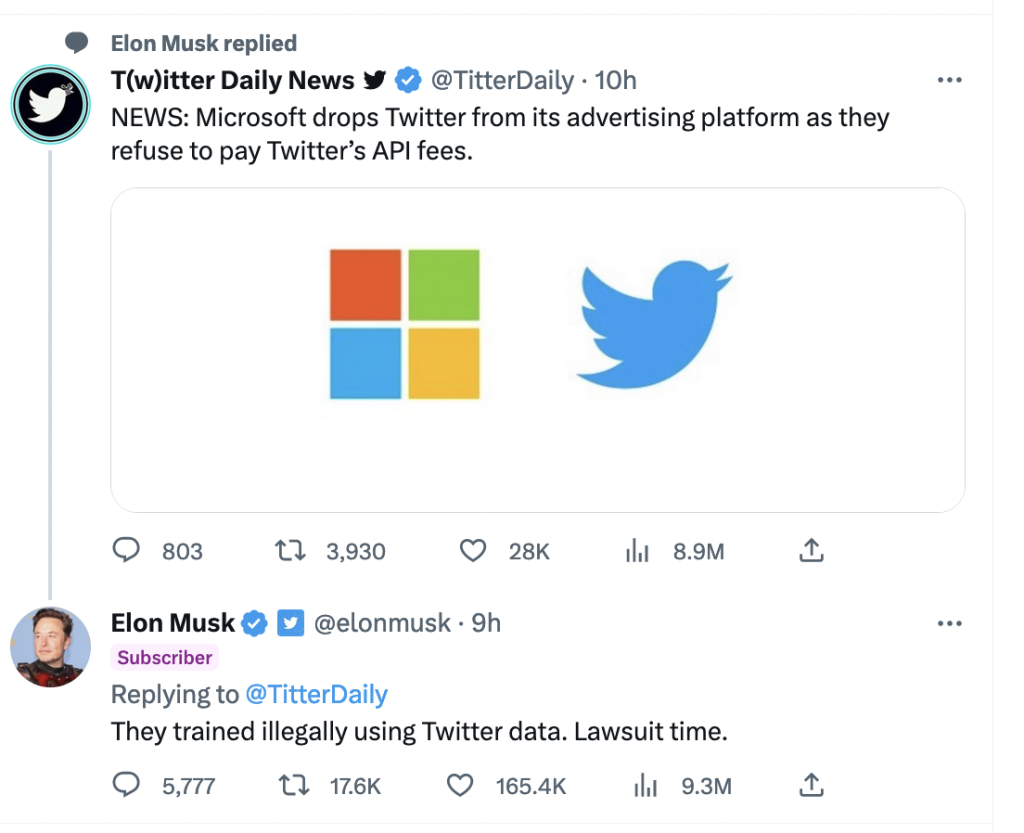How blockchain will address the legal gray area of AI
Access control
4 min readConcerns about the use and misuse of AI are growing as it becomes more prevalent. Recently, several high-profile cases have emerged, in which individuals and organizations have taken legal action against AI for unauthorized use of their data. Blockchain technology has a huge opportunity to provide solutions to issues such as ownership, transparency, and attribution.
Important tech comes with important issues
With ChatGPT, the field of AI has burst into the public consciousness, offering a natural language model that has dazzled, surprised and awoken the world to the potential of this cutting-edge technology. Likewise, visual tools such as DALLE2 and Stable Diffusion are capturing the attention of industry leaders, influencers and politicians.
This has garnered equal amounts of praise and criticism. People ask fundamental questions: about the existential threat AIs pose to human creativity, about the future of work, about ownership. And rightly so.

The issue with the training data
But first, a crash course to explain how these models came to be. Both Stable Diffusion and GPT-3 are deep learning models, each trained on a massive volume of information. Stable Diffusion was trained on LAION 5B, an open dataset representing more than five billion image-text pairs as inputs. Similarly, ChatGPT’s underlying model GPT-3, was trained on 500 billion pieces of text data scraped from the internet.
Of primary concern at the moment is the infringement upon intellectual property rights. If a creator’s work can be recreated, or an entire academic paper written at the “touch of a button”, what does this mean for the state of creative endeavors? Can we enable AI creation while protecting the source of inspiration? We’re beginning to see the effects of this ambiguity, with Getty announcing it will take Stability AI to court in the UK over copyright infringement. It claims its images were unlawfully scraped and then used to train the AI.

Blockchain enables AI
To control the progress of AI, the requirements for the space are less about regulation, and more about transparency and proper attribution. There needs to be a way to understand and track source training material used by the AI. This way, genuine provenance can be established, and all parties’ contributions can be identified and acknowledged.
Which brings us to an opportunity: use one technology, blockchain, to assist with the growth of another, AI. Blockchains were created to address trust and governance issues. The fact that public blockchains are immutable and fully transparent for all to see provides the foundations for a trust-based AI asset registry.
Imagine if each image used in an AI’s source dataset had a corresponding NFT “tag”, associating the asset creator’s wallet and usage conditions. For any derivative work created by an AI, it could associate the inputs used to create the output via a pipeline of on-chain transactions. Should that derivative work go on to be sold, the proper royalties could be passed on to each wallet associated with the source content NFTs, proportional to the contribution made to the AI’s output.

Let’s take this a step further
The friction between publicly available AI and non-public data is also becoming apparent. Samsung and other companies are limiting the internal use of ChatGPT after a recent sensitive data leak incident. But imagine if you could apply the power of such an AI, solely on your entire company’s text-based collateral. You could deploy the AI to train on your annual reports, internal presentations and emails, while being guaranteed that the data stays within your boundaries. Blockchain enables this type of access control.
In particular, one niche area of interest for this filtering technique is the medical and BioPharma research and informed consent arenas. Traditionally, informed consent has required intervention by humans, often doctors, in order to answer the consent-related questions of research candidates. The cost of this process can be immense. With an AI-enabled filter, all pertinent research and consent information could instead be inputted to the AI. The AI could then answer the candidate’s questions with comprehensive, natural responses without the need for human intervention.

A bank account for AI
Finally, there is the simple question of payments. I see incentive structures as a key factor for AIs and data to co-exist and align. But how will AIs transact in an efficient manner? It seems fairly safe to say that AIs won’t be able to get a bank account. So how will they pay or be paid by people, services, systems, and even other AIs?
Again, we turn to blockchain as a solution. In the simplest form, AIs could transact via stablecoins or CBDC (Central Bank Digital Currencies). Alternatively, perhaps the AIs mint their own token to transact and reward activities? Combining AI and blockchain unlocks some exciting use cases that look light years ahead of the way we transact now.
The explosion of AI in the last 12 months is unparalleled. It has captured interest from those normally not influenced by bleeding edge technology. What is clear is that Pandora’s box has been opened. Determining how we utilize and interact with AI is more critical than ever, with transparency and proper attribution likely being a driving force in the development of AI going forward.
A version of this article was first published on Nasdaq.com. If you want to continue the discussion, join us on Discord or contact us.